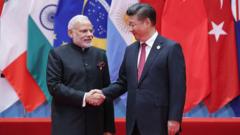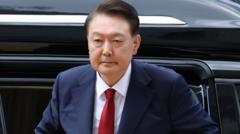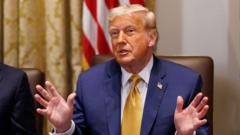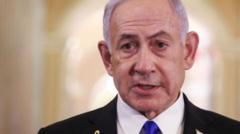The Trump administration's inability to finalize trade agreements has sparked an ongoing debate about the effectiveness of its tariff strategies and their broader consequences on global markets.
Trump Extends Tariff Deadlines Amid Global Trade Tensions
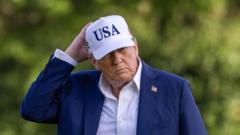
Trump Extends Tariff Deadlines Amid Global Trade Tensions
Delayed negotiations and rising tariffs could reshape international relations.
The Trump administration's aggressive approach to trade, promising "90 deals in 90 days," has hit another snag as deadlines for tariff negotiations are extended. Initially set for 9 July, the deadline has been pushed back to 1 August, with warnings that further delays may follow. Treasury Secretary Scott Bessent emphasized that the government's attention remains focused on 18 nations contributing to 95% of America's trade deficit, as optimism wanes over the realization of new agreements.
The letters being sent to trading partners echo sentiments from previous strategies but lack the urgency expected in negotiations. They reveal a stark reality: the hoped-for quick deals seem far from achievable, especially with Japan and South Korea expressing discontent over ongoing trade relations. Japan's finance minister alluded to possibly utilizing their substantial holdings of US government debt as leverage, illustrating the tension in these negotiations.
Despite earlier concerns about market instability, the lack of urgency in recent tariff announcements has somewhat calmed financial markets. Still, there’s skepticism whether the administration's hardline tactics will yield the desired outcomes. Countries worldwide are responding with caution, aware that trade wars lead to market volatility that can impact US retailers and consumers.
New trade statistics show a complexity in global trade dynamics. While Chinese exports to the US have dipped by nearly 10%, their trade with other regions, such as a substantial rise in sales to the UK and Africa, continues to grow. The US's effective tariff rates have now surged to about 15%, a significant increase from previous decades.
As the US isolates itself with rising tariffs, parallel economic alliances are forming globally, such as recent agreements between the UK and India. The implications of these shifting trade patterns could be long-lasting, emphasizing the need for a reevaluation of trade strategies ahead of the next phases of negotiations. The current calm in the markets may not persist if uncertainties continue to mount.
The letters being sent to trading partners echo sentiments from previous strategies but lack the urgency expected in negotiations. They reveal a stark reality: the hoped-for quick deals seem far from achievable, especially with Japan and South Korea expressing discontent over ongoing trade relations. Japan's finance minister alluded to possibly utilizing their substantial holdings of US government debt as leverage, illustrating the tension in these negotiations.
Despite earlier concerns about market instability, the lack of urgency in recent tariff announcements has somewhat calmed financial markets. Still, there’s skepticism whether the administration's hardline tactics will yield the desired outcomes. Countries worldwide are responding with caution, aware that trade wars lead to market volatility that can impact US retailers and consumers.
New trade statistics show a complexity in global trade dynamics. While Chinese exports to the US have dipped by nearly 10%, their trade with other regions, such as a substantial rise in sales to the UK and Africa, continues to grow. The US's effective tariff rates have now surged to about 15%, a significant increase from previous decades.
As the US isolates itself with rising tariffs, parallel economic alliances are forming globally, such as recent agreements between the UK and India. The implications of these shifting trade patterns could be long-lasting, emphasizing the need for a reevaluation of trade strategies ahead of the next phases of negotiations. The current calm in the markets may not persist if uncertainties continue to mount.


